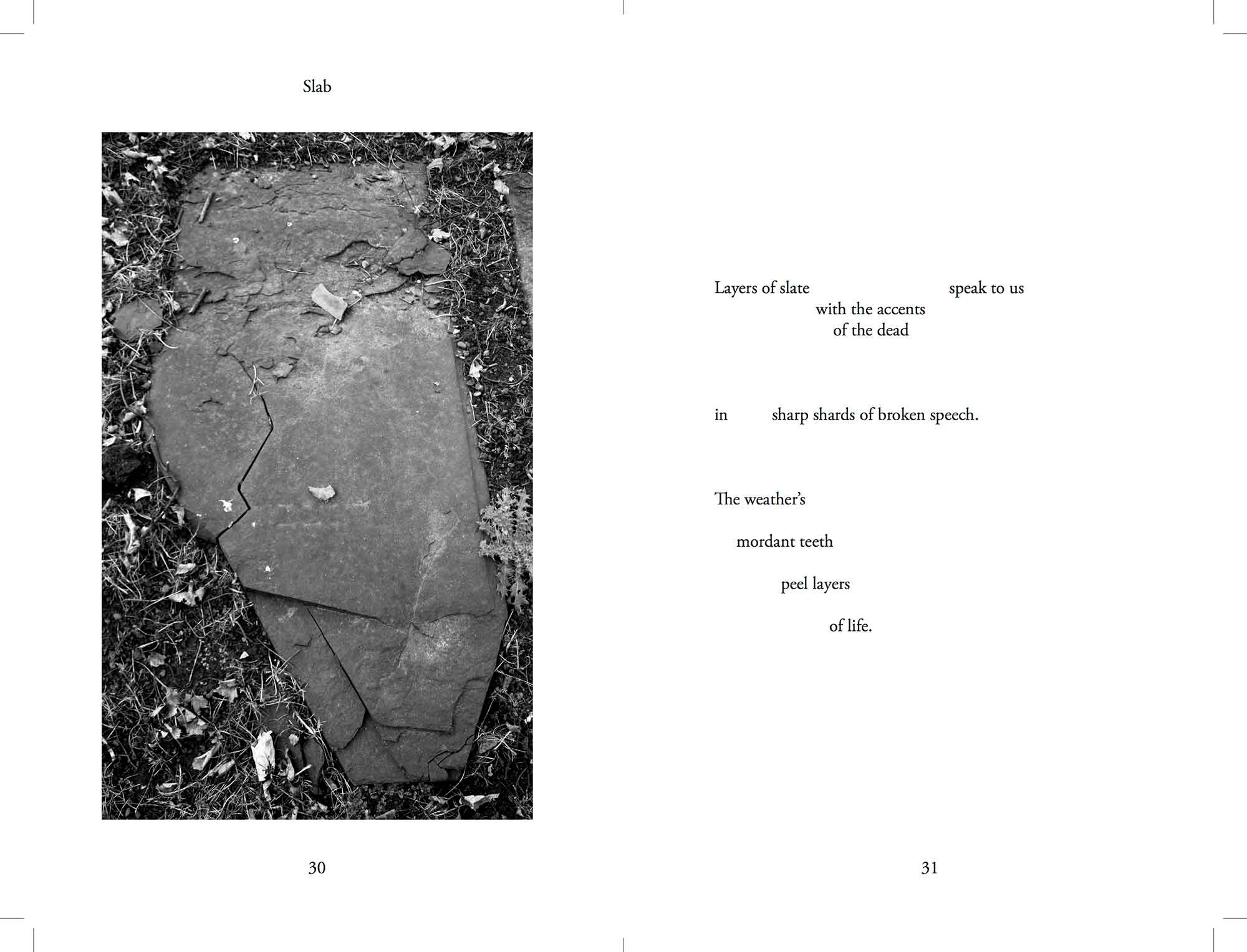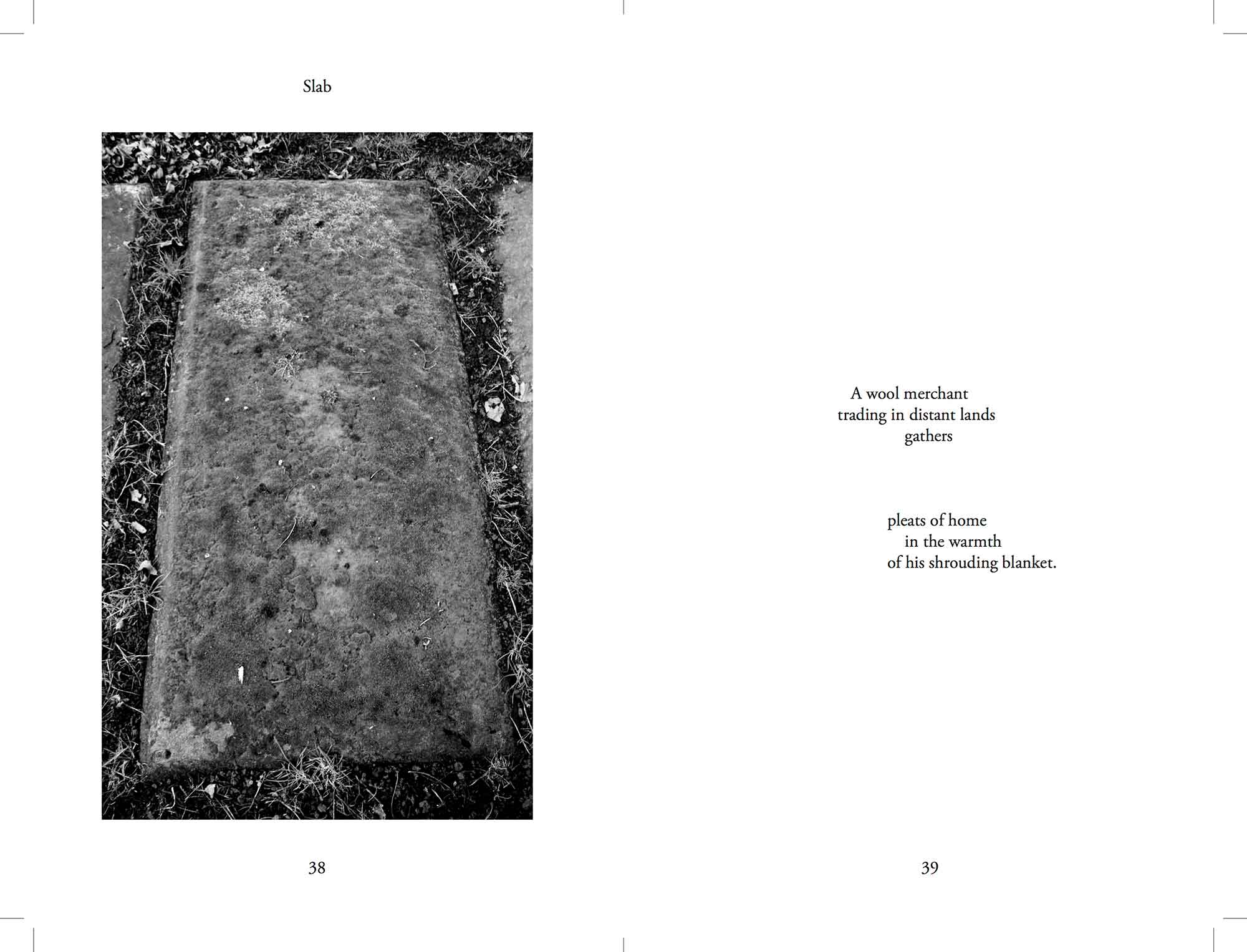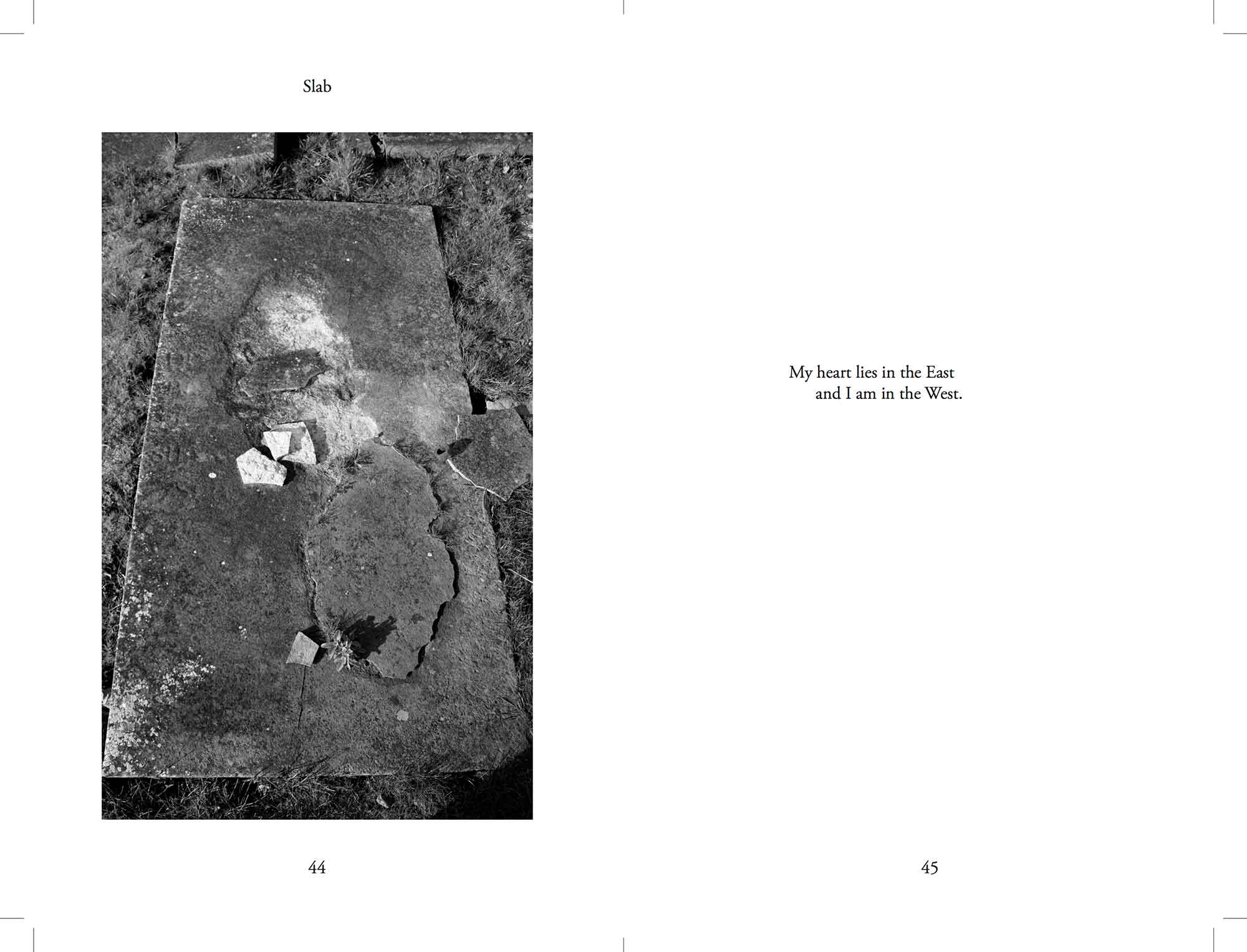



I was raised by storytellers, Carlo and Antonietta, clinging to their great pilgrimage after the war from a Sicilian hillside village to a council flat in Clerkenwell. My grandma whispers gran destino — meaning great destiny, her ninety-year-old eyes gleam. When she really means clandestino — illegal immigrants, her words updated and mutated as veins have darkened and courage wrinkled.
Slab is a collection of concrete poems and photographs developed in Jane Rendell’s Site Writing class, based on the Velho Sephardic Cemetery in which tombstones rest flat to the earth, wreathed in moss, shattered and absorbed into the ground.
The poems chart the history of the Sephardim, Jews forced from Spain, a land where Jewish and Arabic intellectual and spiritual life once flourished together, a history of co-existence that has been muddied and denied. Along with their scanty baggage, the only possession the Sephardim were permitted to carry was their language, Ladino, a combination of ancient Spanish and Hebrew. Those who headed west kept in contact with Spain and their speech evolved with Castilian, but those in the east were cut off, their speech frozen in ancient Spanish. The further they travelled the more porous their language became. Ladino retained its Hispanic base but relied on other languages to evolve and survive, borrowing words and fusing phrases together, legacy to their abandoned cities.
In parallel, the poems chart the history of my Sicilian grandparents who were sheltered and nurtured by this Jewish community three centuries later when they slipped into London as tailors. Like them, the last generation of Ladino speakers to have lived Sephardi culture rest in old people’s homes clinging to this ancient speech through the long centuries of concealment.
I wrote each tombstone a poem drawing from epitaphs and around the formal arrangement of Ladino konsežas, romanzas and coplas. Where full biographies existed, I selected key fragments. Where there is no clue to the stone’s identity, the text is as unreadable, scratched like slate, mottled like moss, concealing these histories once again. I delivered each poem on a single postcard to each room of Albert Stern Halls to students now living in the former Jewish old people’s home that surrounds the site. Each student received one postcard with a connection to one stone addressing the many forms of loss these journeys entail.
David Roberts is a Teaching Fellow in Design and History & Theory at the Bartlett School of Architecture, Visiting Professor at Aarhus School of Architecture and Research Ethics Fellow at the Bartlett Faculty of the Built Environment. Alongside his teaching and research, he is part of collaborative art practice Fugitive Images and of architecture collective Involve.
David’s research, art and cultural activist practice engages community groups whose homes and livelihoods are under threat from urban policy, empowers ethical reasoning in built environment practice, and extends architectural education to primary and secondary school children.
Through his collaborative practice, David co-wrote and co-produced the feature-length documentary/fiction film, Estate, a Reverie; wrote and performed site-specific play Empty Homes Build Empty Homes; and co-curated a six-week project Real Estates, opening PEER Gallery up as a social, discursive and imaginative space around issues of housing and spatial justice in East London through a constantly changing series of exhibitions, screenings, discussions, readings and workshops.
Through his collaborative research, David completed a PhD in Architectural Design Make Public under the supervision of Professor Jane Rendell and Dr Ben Campkin which explored the history and future of two east London housing estates undergoing regeneration. His current research for the Bartlett Ethics Commission led by Professor Jane Rendell, seeks to raise awareness, expand understanding, and collectively develop approaches of ethical practice specific to built environment researchers and practitioners.
Through his collaborative teaching, David works with students to develop creative projects that intervene into a site in order to raise questions and make proposals, initiate independent research into the social relations of architecture, devise situated protocols setting out ethical terms of engagement, and write manifestoes to define what practitioners they seek to become.
David Roberts collaborates with community groups to re-enact and reactivate emancipatory spaces and ideals, drawing on critical acts of writing and performance as a mode of design, as a method of engagement, and a means of activism. On site, he gathers residents around their radical social, political and architectural histories to open a social, discursive and imaginative space from which to build collective knowledge and experiences and share this publicly through artworks, interventions and campaigns. This critical spatial practice brings site writing in dialogue with dramaturgy and devising to raise questions and amplify voices.
Gloria Anzaldúa, Borderlands/La Frontera: The New Mestiza, 1987, San Francisco: Aunt Lute.
Ann Hamilton, Whitecloth, 1999, The Aldrich Contemporary Art Museum, Connecticut.
Susan Hiller, The Last Silent Movie, 2007.
It is raining softly and I am not a trustworthy narrator. In the pale light I leave Mile End Road at the western fringe of Queen Mary College, where mattresses slouch in line by Stepney Fried Chicken and the veiled bus queue spills on to the blue cycle superhighway. I reach a pointed arch timber doorway on a high wall beyond which lies a cemetery, a small plot not even an acre marked by over a thousand graves, enclosed on all sides by student halls and garden walls of terraced cottages. The tombstones rest flat to the earth, not one with an upstanding tablet. In twenty-three rows they keep close company, bare stone or wreathed in moss that clings to this old world, full oblong or shattered and absorbed into the ground, ties of blood woven together by the roots of sixteen trees that split and swallow manuscript. Some inscriptions are still legible today, cut in Portuguese and Hebrew, some Spanish, few English, recording little more than foreign names and dates and the rare indulgence that paints portraits of this community in quick strokes, ‘the bird catcher’, ‘sweet poet’, ‘maiden’, ‘son of the harp player’. Others are worn plain until this rain collects and fills faint hollows, and for a moment their ancient epitaphs gleam, complete, then are gone, overflowing as tributaries branch and blot from word to word when, flooded, the stones become a mirror…






































































